Science aboard the Healy is not just random. With Chief Scientist, Jackie Grebmeier, the research plan takes shape and becomes a coordinated effort so that everyone aboard the ship can conduct his or her research. A well-planned effort is needed since the ship is expensive to operate (I heard about $40/minute…yes, a minute!)
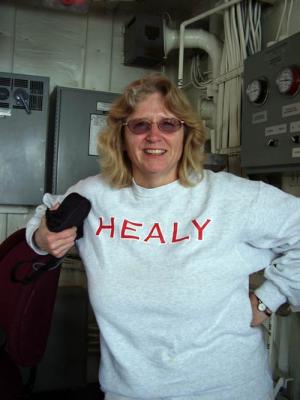
Chief Scientist, Jackie Grebmeier
For this particular cruise, most of the research projects are conducted at stations – or specific pre-determined points in the Bering Sea. The ship has a chart of all the stations (over 100) and they work their way from one station to the next in sequence. Stations can be very far apart or close together. Once the ship at a station, the team working that shift goes to work and begins to collect samples that they will analyze later. To watch the teamwork is amazing! It’s all coordinated, each person doing a specific task without hesitation. This is important as each station can take up to 4 hours to complete! There is no resting – just shift changes as the ship travels from station to station until the cruise ends in mid-June.
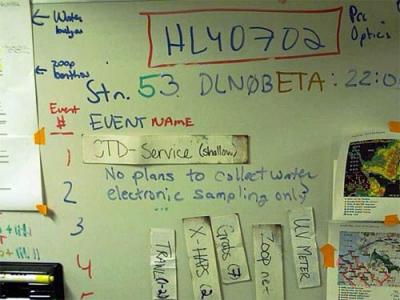
*The Board of Lies *
**Each station has a set of tasks that need to be performed. The ‘Board of Lies’ outlines the plan of action for each station. Some tasks are dropped if the researcher doesn’t need samples or the environment isn’t suitable for sampling – like sending out a big trawling into the ice floes isn’t a good idea! Everyone has access to a view of the Board of Lies through a web cam. It shows up on the Bridge, in the labs, and on the Internet – it’s that important. Once on station, there are typically six tasks to complete on the "aft” or back of the ship. Although there are only six tasks to complete – the data collected with the six instruments is used in a multitude of ways and by many researchers to learn more about the ecosystem of the Northern Bering Sea.
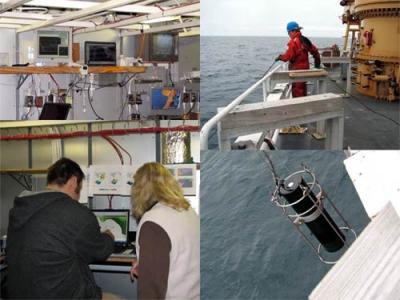
On station conducting tasks one and two. In the left top and bottom photos, there are computers throughout the lab that monitor and record the Conductivity, Temperature, and Depth recorder (CTDA research tool that is submerged in the water to measure conductivity (salinity), temperature, and depth.). The right photos are of the Ultra-Violet (UV) Meter.
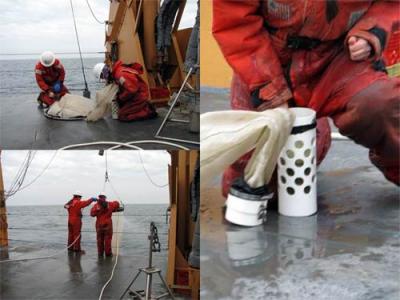
On station conducting task three, the zooplankton tow. This equipment samples the water column, filtering out all the water and leaving behind the zooplankton in the fine meshed net.
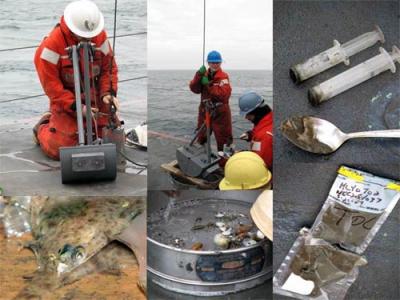
On station conducting task four, the Van Veen grabs. Van Veen grabs sample the bottom by "grabbing" sediment and organisms from the bottom of the ocean floor.

On station conducting task five, the HAPS corer. This is a single HAPS corer, which is a device that is lowered to the bottom of the ocean floor. It goes into the sediment and takes a core sample that is by a number of the researchers in different ways.
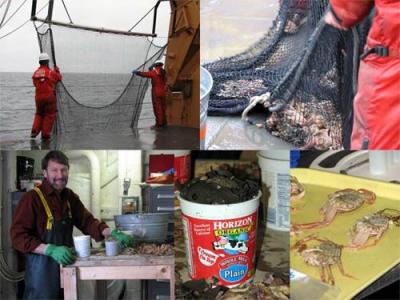
On station conducting task six - trawling. A large trawling net is used to sample benthic organisms. After trawling, the organisms are sorted and then taken to the lab for further identification and anaylzes.
The primary focus of the Healy during this mission is to support scientific research. Therefore, the crew is trained to work with the researchers and ensure their safety. Besides just operating the ship, the crew works all the heavy equipment (such as cranes and winches), keeps the ship on station, and works with the Chief Scientist to coordinate activities.
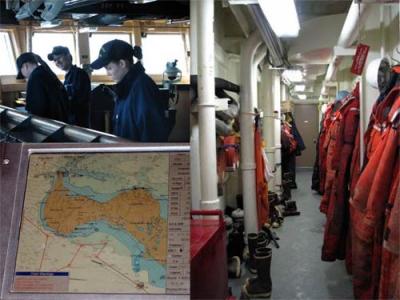
Research aboard the Healy is supported by a great crew, a safe working environment, and incredible technology.
It’s an amazing operation and both the National Science Foundation and the U.S. Coast Guard should be very proud of the researchers and the crew aboard the Healy.

Comments